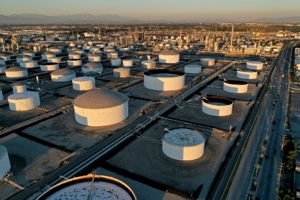U.S. manufacturing slowdown fails to rebuild diesel stocks
(Reuters) - U.S. manufacturers reported another decline in activity in July 2023, but industrial electricity and especially diesel consumption have declined less than expected in recent months, explaining why prices remain relatively firm.
The Institute for Supply Management’s purchasing managers index increased slightly to 46.4 (13th percentile for all months since 1980) in July from 46.0 (11th percentile) in June but down from 52.8 (51st percentile) a year ago.
Despite the improvement, the manufacturing index has been below the 50-point threshold dividing expanding activity from a contraction for nine months since November 2022.
The length of the downturn already puts it somewhere between a mid-cycle slowdown (generally eight months or fewer) and a full cycle-ending recession (generally 11 months or more).
If the slowdown proves to be a “soft landing”, it is already the second longest mid-cycle slowdown after the Second World War, exceeded in duration only by the slowdown in 1995/96, which lasted a total of 10 months.
The forward-looking new orders component remained weak, indicating the downturn is likely to last for several months more, which is likely to make it the longest on record.
The new orders index was stuck at 47.3 (13th percentile) in July up from 45.6 (9th percentile) in June but still down from 48.0 (16th percentile) a year earlier.
Industrial electricity use and distillate fuel oil consumption are both correlated with the manufacturing and freight cycle and therefore with the purchasing managers index.
But both have fallen much less than expected given the length and apparent depth of the downturn in industrial activity, especially in the case of diesel and other distillate fuel oils.
Based on the most recent data available, industrial electricity consumption was down by only -1.3% in the three months from February to April compared with the same period a year earlier.
The change in electricity use was in the 19th percentile for all overlapping three-month periods since 1980 (“Monthly energy review”, U.S. Energy Information Administration, July 26, 2023).
Distillate fuel oil consumption actually rose by almost +0.8% in the three months from March to May compared with a year earlier.
The change in apparent distillate consumption was in the 44th percentile for all three-month periods since 1980 which is not consistent with an industrial recession.
The strength of domestic distillate consumption helps explain why fuel oil inventories have remained well below the prior ten-year seasonal average.
Distillate supplied
The resilience of industrial electricity use and especially apparent distillate fuel oil consumption may indicate the ISM manufacturing index is overstating the depth of the downturn.
But apparent consumption is measured by the disappearance of distillate from refineries, pipelines and bulk terminals in the primary petroleum system to distributors and retailers in the secondary system and end-users in the tertiary system.
It is possible some of the strength in apparent consumption between March and May (especially in April and May) reflected inventories being pulled forward along the supply chain rather than an increase in end-use.
The inflation-adjusted price of distillate fuel oil had fallen around 25% by April-May 2023 compared with December-January and was down by almost 50% compared with April-May 2022.
It is possible retailers and end-users took advantage of cheaper prices to top up tanks after running stocks down in 2022 and earlier in 2023.
If true, some of the primary inventories may have been transformed into secondary and tertiary stocks rather than consumed.
Accumulation of secondary and tertiary stocks in April and May would imply lower apparent consumption in June and July.
Unfortunately, there is no reliable data on stocks held in the secondary and tertiary systems so this must remain speculative.
In any event, the strength of apparent consumption has kept primary inventories well below the long-term seasonal average, helping drive a recovery in refining margins and diesel prices.
Primary inventories amounted to 113 million barrels at the end of May 2023, up slightly from 109 million barrels at the end of May 2022, but otherwise the lowest seasonal level since May 2005.
The relatively resilient consumption of electricity and diesel, and correspondingly low levels of spare generating capacity and distillate inventories, imply the energy system is operating close to its maximum capacity.
In the event of a soft landing followed by a re-acceleration of the business cycle, capacity constraints will re-emerge quickly and could lead to an early resurgence of inflation.







Comments